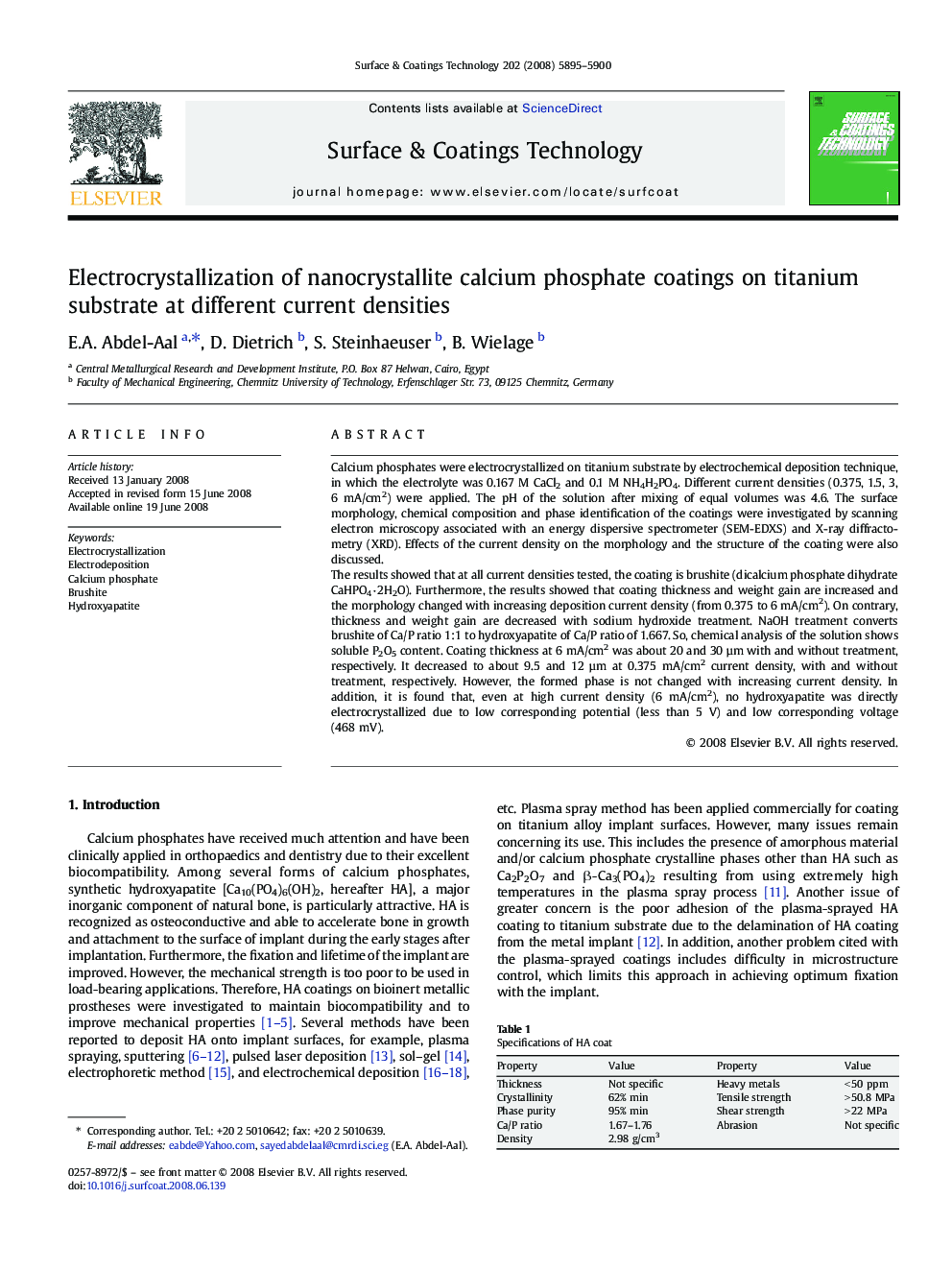| Article ID | Journal | Published Year | Pages | File Type |
|---|---|---|---|---|
| 1661295 | Surface and Coatings Technology | 2008 | 6 Pages |
Calcium phosphates were electrocrystallized on titanium substrate by electrochemical deposition technique, in which the electrolyte was 0.167 M CaCl2 and 0.1 M NH4H2PO4. Different current densities (0.375, 1.5, 3, 6 mA/cm2) were applied. The pH of the solution after mixing of equal volumes was 4.6. The surface morphology, chemical composition and phase identification of the coatings were investigated by scanning electron microscopy associated with an energy dispersive spectrometer (SEM-EDXS) and X-ray diffractometry (XRD). Effects of the current density on the morphology and the structure of the coating were also discussed.The results showed that at all current densities tested, the coating is brushite (dicalcium phosphate dihydrate CaHPO4 · 2H2O). Furthermore, the results showed that coating thickness and weight gain are increased and the morphology changed with increasing deposition current density (from 0.375 to 6 mA/cm2). On contrary, thickness and weight gain are decreased with sodium hydroxide treatment. NaOH treatment converts brushite of Ca/P ratio 1:1 to hydroxyapatite of Ca/P ratio of 1.667. So, chemical analysis of the solution shows soluble P2O5 content. Coating thickness at 6 mA/cm2 was about 20 and 30 µm with and without treatment, respectively. It decreased to about 9.5 and 12 µm at 0.375 mA/cm2 current density, with and without treatment, respectively. However, the formed phase is not changed with increasing current density. In addition, it is found that, even at high current density (6 mA/cm2), no hydroxyapatite was directly electrocrystallized due to low corresponding potential (less than 5 V) and low corresponding voltage (468 mV).
